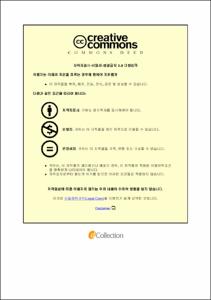Ulsan Univ. Repository
Thesis
General Graduate School
Mechanical & Automotive Engineering
2. Theses (Ph.D)
OBSERVER-BASED CONTROL DESIGN TECHNIQUES FOR ROBOT MANIPULATORS
- Abstract
- Due to the capability of performing repetitive tasks with high speeds and accuracies, robot manipulators have been developed and used in many fields such as industrial automation, robotic surgery, and in-space missions. Besides the development of hardware components such as mechanical and electric subsystems, control design plays an important role to ensure that the robot manipulators operate precisely and achieve the desired performance. Recently, advanced control techniques have been proposed to deal with practical problems such as model uncertainties and external disturbances, output and state constraints, control input saturation, convergence time, and their combinations. Among them, uncertainty and disturbance attenuation are essential to guarantee nominal control performance before considering any further problems. This thesis proposes advanced control techniques for robot manipulators suffering from nonlinear dynamics, model uncertainties, external disturbances, and unmeasurable joint velocities. Firstly, the kinematics and dynamics of a general n-degree-of-freedom (n-DOF) series manipulator are established by the Lagrangian method. Based on that, several observers such as sliding mode observer (SMO), and extended sliding mode observer (ESMO) are firstly designed to simultaneously estimate both lumped uncertainties/disturbances and unknown joint velocities. Then, the estimated values are feedback to the main controller which is constructed by the backstepping framework to guarantee the robustness of the control system with those difficulties. In addition, to further improve the position tracking control accuracy, the barrier Lyapunov function (BLF) is adopted to guarantee prescribed position tracking performance. For some specific applications while the contouring performance is primary compared to the general tracking performance, the task coordinate frame (TCF), which transforms the tracking error into the contouring error and other error components, is integrated into the original backstepping framework together with advanced observers to achieve high accuracy contouring performance. Finally, the proposed observer techniques are utilized in not only position control tasks but also force control tasks, i.e., admittance control architecture which regulates the relationship between the end-effector position and interaction forces with the environment.
- Issued Date
- 2023
- Awarded Date
- 2023-08
- Type
- Dissertation
- Affiliation
- 울산대학교
- Department
- 일반대학원 기계자동차공학과
- Advisor
- Kyoung Kwan Ahn
- Degree
- Doctor
- Publisher
- 울산대학교 일반대학원 기계자동차공학과
- Language
- eng
- Rights
- 울산대학교 논문은 저작권에 의해 보호 받습니다.
- Appears in Collections:
- Mechanical & Automotive Engineering > 2. Theses (Ph.D)
- 파일 목록
-
-
Download
 200000688539.pdf
기타 데이터 / 6.68 MB / Adobe PDF
200000688539.pdf
기타 데이터 / 6.68 MB / Adobe PDF
-
Items in Repository are protected by copyright, with all rights reserved, unless otherwise indicated.